prohibition
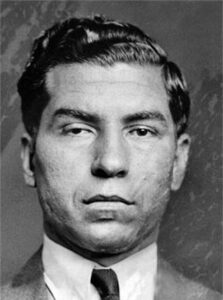
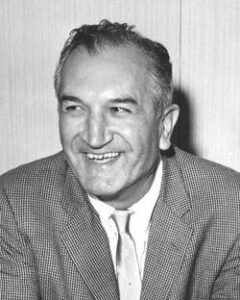 The establishment of prohibition, while originally designed to be a good thing, actually made criminals out of some people, both those who liked to have a drink and those who sold and made the alcohol. By 1931, the mob had organized. After a series of power struggles and murders, mobster Charles “Lucky” Luciano established the “Commission,” a governing body headed by five New York City crime families. Thus began four decades under the rule of the “Five Families” using tactics like loansharking, extortion, and labor union infiltration to influence and profit from a range of businesses. “They didn’t rob banks…they didn’t have to,” says Selwyn Raab, author of Five Families: The Rise, Decline, and Resurgence of America’s Most Powerful Mafia Empires. “They
The establishment of prohibition, while originally designed to be a good thing, actually made criminals out of some people, both those who liked to have a drink and those who sold and made the alcohol. By 1931, the mob had organized. After a series of power struggles and murders, mobster Charles “Lucky” Luciano established the “Commission,” a governing body headed by five New York City crime families. Thus began four decades under the rule of the “Five Families” using tactics like loansharking, extortion, and labor union infiltration to influence and profit from a range of businesses. “They didn’t rob banks…they didn’t have to,” says Selwyn Raab, author of Five Families: The Rise, Decline, and Resurgence of America’s Most Powerful Mafia Empires. “They 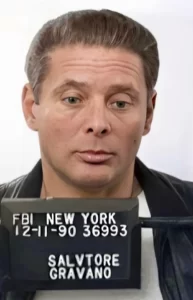 did all these more elegant, sophisticated crimes, because they paid more and there was less danger.” The five mob families established or basically took over a lot of different operations. They especially ran gambling and drug trafficking rings, but they also held controlling interest in construction and transportation companies.
did all these more elegant, sophisticated crimes, because they paid more and there was less danger.” The five mob families established or basically took over a lot of different operations. They especially ran gambling and drug trafficking rings, but they also held controlling interest in construction and transportation companies.
The Five Families…Genovese, Bonanno, Lucchese, Gambino and Colombo…were immigrants from Italy, particularly Sicily. Some of these were not new to the world of crime. They already had ties to Sicilian crime families, who operated according to a code of honor known as omertà…”a rule or code that prohibits speaking or divulging information about certain activities, particularly those related to criminal organizations. Omertà originated in Italy, specifically Sicily, and is often associated with the Mafia, where it represents a vow of silence regarding criminal activities and cooperation with authorities.” Because of their ties, the Five Families incorporated the concept of omertà 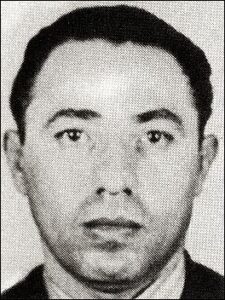
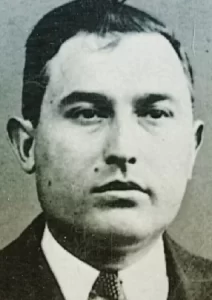 into the Commission. That effectively prohibited mobsters from ratting out members of their own family, as well as other families on the Commission…and it worked for a while.
into the Commission. That effectively prohibited mobsters from ratting out members of their own family, as well as other families on the Commission…and it worked for a while.
While the Five Families spent time in power, their influence diminished after the United States passed the 1970 Racketeer Influenced and Corrupt Organizations Act (RICO Act), which gave the government new ways to prosecute organized crime. The effectiveness of the act led mobsters to break omertà and become informants, and it even resulted in one boss flipping on his family. It is a matter of survival I guess, and apparently, while blood is thicker than water, self-preservation tops them both.
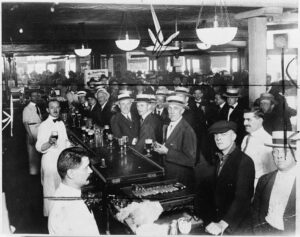 From 1920 to 1929, the consumption of alcohol was outlawed in the United States. The Eighteenth Amendment went into effect in 1920, banning the production, importation, and sale of alcoholic beverages in the United States. That amendment immediately produced a whole new group of criminals…those who would not comply with the new law that they felt was unconstitutional. Whether it was or whether it wasn’t, made no difference. They would not comply. Alcohol went “underground” in more ways than one.
From 1920 to 1929, the consumption of alcohol was outlawed in the United States. The Eighteenth Amendment went into effect in 1920, banning the production, importation, and sale of alcoholic beverages in the United States. That amendment immediately produced a whole new group of criminals…those who would not comply with the new law that they felt was unconstitutional. Whether it was or whether it wasn’t, made no difference. They would not comply. Alcohol went “underground” in more ways than one.
From 1920 to 1929, the Eighteenth Amendment was the law of the land concerning alcohol. Then on March 2, 1929, the Jones Act was signed into law by President Calvin Coolidge. It was effectively the last gasp of Prohibition. The Jones Act strengthened the federal penalties for the bootlegging of alcohol. This, the last act, caused the 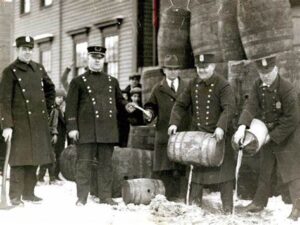 country to reject Prohibition within five years, and to repeal the Eighteenth Amendment. Prohibition was never particularly popular across the nation and when the people slowly realized that it had other ramifications, it rapidly fell by the wayside. The biggest problem with Prohibition was that it didn’t stop the public’s demand for alcohol. Oh, consumption did drop some, but it remained substantial, nevertheless, and in order to fill this now criminal demand, an entire criminal infrastructure was created virtually overnight.
country to reject Prohibition within five years, and to repeal the Eighteenth Amendment. Prohibition was never particularly popular across the nation and when the people slowly realized that it had other ramifications, it rapidly fell by the wayside. The biggest problem with Prohibition was that it didn’t stop the public’s demand for alcohol. Oh, consumption did drop some, but it remained substantial, nevertheless, and in order to fill this now criminal demand, an entire criminal infrastructure was created virtually overnight.
Of course, alcohol was now more expensive, and it brought in enormous amounts of money. Illegal trafficking was highly profitable and helped established organized crime. Crime syndicates dominated the major cities. 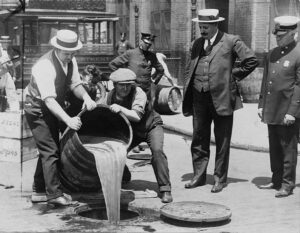 Bribery was running rampant, fueled by those who could afford to bribe officials throughout the criminal justice system. Law enforcement became corrupt, and the federal government became a major player in policing and prosecuting law breakers for the first time.
Bribery was running rampant, fueled by those who could afford to bribe officials throughout the criminal justice system. Law enforcement became corrupt, and the federal government became a major player in policing and prosecuting law breakers for the first time.
Prohibition did nothing to really stop alcohol consumption but rather caused a major breakdown in the social fabric because of its effect on the national psyche. With so many of the people brazenly ignoring the law, an atmosphere of cynicism and hypocrisy was established. Finally repealed the Eighteenth Amendment and Prohibition were widely viewed as a total failure. All that effectively ended with the Jones Act on March 2, 1929.
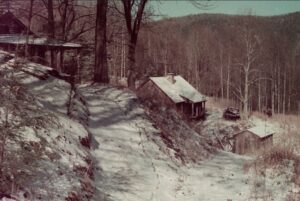
 As America grew, towns popped up in many places, only to dwindle into ghost towns when the expected industry that motivated their beginning, fell through. Lost Cove was one such town. Established just before the Civil War, it was once a thriving agricultural community, but then in the early 20th century, logging replaced farming, and the railroad brought workers. Somehow in the shuffle of changes, Lost Cove found itself off the beaten path, almost hidden in the forest, with no electricity or running water. The little town had to figure out something new, and so, because of the remoteness and because the town lay on the North Carolina/Tennessee border, an equally thriving moonshine industry was born.
As America grew, towns popped up in many places, only to dwindle into ghost towns when the expected industry that motivated their beginning, fell through. Lost Cove was one such town. Established just before the Civil War, it was once a thriving agricultural community, but then in the early 20th century, logging replaced farming, and the railroad brought workers. Somehow in the shuffle of changes, Lost Cove found itself off the beaten path, almost hidden in the forest, with no electricity or running water. The little town had to figure out something new, and so, because of the remoteness and because the town lay on the North Carolina/Tennessee border, an equally thriving moonshine industry was born.


Many people might think that the moonshine industry was all due to prohibition, and that is largely true, but while bootlegging was a crime of opportunity, it was also quite likely to be a crime of necessity. Still, while moonshine could provide a living for the residents, it would never be able to sustain a whole ton for very long. Eventually, the residents of Lost Cove began to move away to laces where they could make a living. The town, now empty, seen fell into disrepair. These days Lost Cove is a graveyard of abandoned homes and crumbling gravestones. Because Lost Cove was on the border, either state could have agreed on jurisdiction to collect tax revenues, but both declined to, thereby creating a haven for bootlegging.
Even with the logging business doing well, the timber eventually thinned and the railroad service that brought passenger trains through the area stopped. With that, the Lost Cove residents became even more isolated. The nearest stores were eight miles away, and they would have to walk for basic supplies, mostly because they didn’t have money for any other form of transportation. Soon the infrastructure deteriorated too, and the rough 
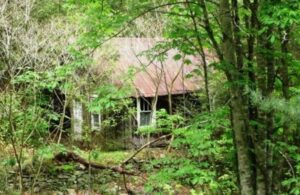 or non-existent roads led to even more shortages. In the end, here was nothing left, but to leave. The last known resident left in 1957. Sadly, in 2007, a fire destroyed most of what still stood in Lost Cove. All that is left now is a few structures, memories, and the history of the area, only seen by the occasional hiker, using trails that remain the only route of access.
or non-existent roads led to even more shortages. In the end, here was nothing left, but to leave. The last known resident left in 1957. Sadly, in 2007, a fire destroyed most of what still stood in Lost Cove. All that is left now is a few structures, memories, and the history of the area, only seen by the occasional hiker, using trails that remain the only route of access.
 As Christmas approaches, with all of its feasts, we start thinking of all the goodies we will make and eat. For many people, pie is a big part of holiday meals, not to mention other meals year-round. People just simply love pie. They would bake them to share or give as gifts, and especially to have with tea when guests came by, but the one thing I can’t imagine is any kind of worship involving pie. Nevertheless…
As Christmas approaches, with all of its feasts, we start thinking of all the goodies we will make and eat. For many people, pie is a big part of holiday meals, not to mention other meals year-round. People just simply love pie. They would bake them to share or give as gifts, and especially to have with tea when guests came by, but the one thing I can’t imagine is any kind of worship involving pie. Nevertheless…
In 1644, an English statesman named Oliver Cromwell, came up with the totally irrational idea that pie was a pagan form of pleasure, so he banned pie. The eating of pie, baking pies, even thinking about pie. Well, maybe not exactly, but for the next sixteen years, no one could eat pie. So, like the prohibition years that would come about in the future, the eating of pie went…underground.
I can’t imagine having to bake and eat a pie in secret. For one thing, you can smell a pie baking. The aroma fills the house, and in the 1600s, they didn’t have a conventional oven like we have today. Dutch ovens were the first ovens used for baking. The pot would be embedded in the hot coals and ashes, and then more coals would be placed on its flat lid. Really, any large iron pot could be used as a Dutch oven. Double boilers were also used at this time. This meant that the aroma of the pie filled the area even more, because of the open chimney or the open pit in the outdoors where the pie was baked. I’m not sure if a violation of this new prohibitive law was a fine, jail, or death, but it was certainly something that made people realize that they must really want to bake that pie, if they would take such a risk for the chance to bake one.
Finally, in 1660, the Restoration leaders lifted the ban on pie baking, and the people rejoiced. I don’t know if  they went as crazy about getting back to eating pie as they did the end of the Prohibition years, but I would imagine that there were a few gatherings to celebrate the new-found freedom. These days we can’t imagine such a silly idea concerning pie, but with every revelation, there must first have been a misconception. Oliver Cromwell somehow saw something in pie that made him believe the way he did, so seriously that he would make a law. Perhaps, it was his own addiction to pie that made him think it must be bad…not that I know that he was addicted to pie, but people have given up food and drink items for that reason for centuries. In fact, people have had confused ideas when it comes to religion for centuries.
they went as crazy about getting back to eating pie as they did the end of the Prohibition years, but I would imagine that there were a few gatherings to celebrate the new-found freedom. These days we can’t imagine such a silly idea concerning pie, but with every revelation, there must first have been a misconception. Oliver Cromwell somehow saw something in pie that made him believe the way he did, so seriously that he would make a law. Perhaps, it was his own addiction to pie that made him think it must be bad…not that I know that he was addicted to pie, but people have given up food and drink items for that reason for centuries. In fact, people have had confused ideas when it comes to religion for centuries.
 As many of us know, from history, there was a time in United States history when alcohol was illegal. Some will debate if it should still be today, but it is not. Prohibition, as it was called, ran from 1920 to 1933. Prohibition in the United States was a nationwide constitutional ban on the production, importation, transportation, and sale of alcoholic beverages. The Prohibitionists were led by pietistic Protestants. The idea was to heal what they saw as an ill society beset by alcohol-related problems such as alcoholism, family violence and saloon-based political corruption. There are many alcohol related issues that really do fall into these categories, but you can’t make people stop something that they are intent on doing. Drugs are the same, but we have to draw the line somewhere, or we will have a “zombieistic” society.
As many of us know, from history, there was a time in United States history when alcohol was illegal. Some will debate if it should still be today, but it is not. Prohibition, as it was called, ran from 1920 to 1933. Prohibition in the United States was a nationwide constitutional ban on the production, importation, transportation, and sale of alcoholic beverages. The Prohibitionists were led by pietistic Protestants. The idea was to heal what they saw as an ill society beset by alcohol-related problems such as alcoholism, family violence and saloon-based political corruption. There are many alcohol related issues that really do fall into these categories, but you can’t make people stop something that they are intent on doing. Drugs are the same, but we have to draw the line somewhere, or we will have a “zombieistic” society.
As Prohibition progressed, many communities introduced alcohol bans and enforcement of these new prohibition laws became a topic of debate. Prohibition supporters were called “Drys.” The “Drys” presented prohibition as a battle for public morals and health. The progressives, along with the Democratic and Republican parties picked up on the movement, and it gained a national grassroots base through the Woman’s Christian Temperance Union. After 1900, it was coordinated by the Anti-Saloon League. There were those who opposed Prohibition, including the beer industry, who mobilized “Wet” supporters from the wealthy Catholic and German Lutheran communities, but the influence of these groups receded from 1917 following the entry of the United States into the First World War against Germany.
By a succession of state legislatures, the alcohol industry was curtailed, and finally ended nationwide under the Eighteenth Amendment to the United States Constitution in 1920. The Eighteenth Amendment passed “with a 68 percent supermajority in the House of Representatives and 76 percent support in the Senate,” as well as ratification by 46 out of the 48 states we had at the time. That enabled legislation, known as the Volstead Act, which set down the rules for enforcing the federal ban and defined the types of alcoholic beverages that were prohibited. Unlike most people think, not all alcohol was banned. For example, religious use of wine was permitted. Private ownership and consumption of alcohol were not made illegal under federal law, but local laws were stricter in many areas, with some states banning possession outright.
With prohibition came the criminal element associated with a refusal to comply. Criminal gangs gained control of the beer and liquor supply in many cities. By the late 1920s, a new opposition to Prohibition emerged nationwide. Critics attacked the policy saying it was actually causing more crime, lowering local revenues, and imposing “rural” Protestant religious values on “urban” America. In another bizarre twist of Prohibition in the United States, the United States government literally decided that if people would not comply with the new law, they would make the penalty much stiffer. When the people continued to consume alcohol despite its being banned, law officials got frustrated and decided to try a different kind of deterrent…death. They literally ordered the poisoning of industrial alcohols manufactured in the United States. These were products regularly stolen by bootleggers to use is making moonshine. By the end of Prohibition in 1933, the federal poisoning program is estimated to have killed at least 10,000 people.
Prohibition ended with the ratification of the Twenty-first Amendment, which repealed the Eighteenth 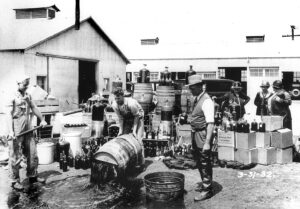 Amendment on December 5, 1933, though prohibition continued in some states. To date, this is the only time in American history in which a constitutional amendment was passed for the purpose of repealing another. Looking back on Prohibition, you will find researchers who say that alcohol consumption declined substantially due to Prohibition. They will also say that rates of liver cirrhosis, alcoholic psychosis, and infant mortality declined as well. Prohibition’s effect on rates of crime and violence is rather another story, because of the criminal element that made and sold alcohol in spite of the law. Nevertheless, Prohibition lost supporters every year it was in action, and lowered government tax revenues at a critical time before and during the Great Depression. I guys it all comes down to money in the end.
Amendment on December 5, 1933, though prohibition continued in some states. To date, this is the only time in American history in which a constitutional amendment was passed for the purpose of repealing another. Looking back on Prohibition, you will find researchers who say that alcohol consumption declined substantially due to Prohibition. They will also say that rates of liver cirrhosis, alcoholic psychosis, and infant mortality declined as well. Prohibition’s effect on rates of crime and violence is rather another story, because of the criminal element that made and sold alcohol in spite of the law. Nevertheless, Prohibition lost supporters every year it was in action, and lowered government tax revenues at a critical time before and during the Great Depression. I guys it all comes down to money in the end.
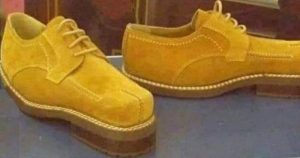 The life of a spy is a dangerous one. Getting caught spying is often punishable by death, so the key to being a successful…and later old spy, is not to get killed, and therefore not to get caught. The spies had a number of way so fool the Nazis. One of the ways was to research the proper clothing for the area and the times, and make sure that the clothing of the spy didn’t stand out as being foreign or outdated. To miscalculated that aspect of the spy, could mean certain death.
The life of a spy is a dangerous one. Getting caught spying is often punishable by death, so the key to being a successful…and later old spy, is not to get killed, and therefore not to get caught. The spies had a number of way so fool the Nazis. One of the ways was to research the proper clothing for the area and the times, and make sure that the clothing of the spy didn’t stand out as being foreign or outdated. To miscalculated that aspect of the spy, could mean certain death.
Clothing wasn’t always the concern. When a spy is being followed, footprints can be very telling. One of the ways that the spies fooled the Nazis was the spy shoes they wore. The shoes were very functional as a way to disguise what was going on, but the looked hilarious. The idea of the shoes was to make the person following the spy think that  the spy was going the opposite direction from that which the spy was really going. Basically, the shoe was put on the sole backwards. That way, the person following the spy, would think he was walking toward the spy, when he was actually walking away from him. The technique gave the spy precious time to get far away from the enemy who was tracking him. The only problem for the spy was the shape of the shoe. It seems to me that the shape of the shoe would feel very odd to the spy. Nevertheless, the shoe was necessary, and so the spy got used to it. I suppose the feeling was similar to a child putting their shoes on the wrong feet. It is thought that the shoes might have first been used by Moonshiners during the prohibition period.
the spy was going the opposite direction from that which the spy was really going. Basically, the shoe was put on the sole backwards. That way, the person following the spy, would think he was walking toward the spy, when he was actually walking away from him. The technique gave the spy precious time to get far away from the enemy who was tracking him. The only problem for the spy was the shape of the shoe. It seems to me that the shape of the shoe would feel very odd to the spy. Nevertheless, the shoe was necessary, and so the spy got used to it. I suppose the feeling was similar to a child putting their shoes on the wrong feet. It is thought that the shoes might have first been used by Moonshiners during the prohibition period.
Our more modern day thought concerning spy shoes and other equipment is probably far more advanced. The shoes might have contained a knife in the heel or even a shoe phone, like Maxwell Smart…on the show “Get 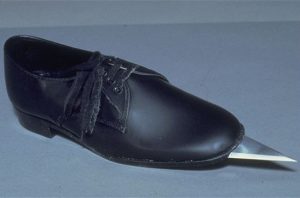 Smart.” Of course, much of that is fiction, and I don’t know if real modern day spies even use special shoes or any other special spy tools, for that matter. The Backward Spy Shoes were a very simple tool, but it would seem that they were highly effective during World War II. The only problem I see with a shoe that takes a tracker back to the starting point of the spy who is being pursued is that it would make it impossible to return to the point of origin for fear of being tracked there. Of course if the spy walked to a public place, like a train station, and then switched shoes, they could easily get lost in the crowd, never to be found. Either way, the shoes were a clever way to outsmart the enemy.
Smart.” Of course, much of that is fiction, and I don’t know if real modern day spies even use special shoes or any other special spy tools, for that matter. The Backward Spy Shoes were a very simple tool, but it would seem that they were highly effective during World War II. The only problem I see with a shoe that takes a tracker back to the starting point of the spy who is being pursued is that it would make it impossible to return to the point of origin for fear of being tracked there. Of course if the spy walked to a public place, like a train station, and then switched shoes, they could easily get lost in the crowd, never to be found. Either way, the shoes were a clever way to outsmart the enemy.
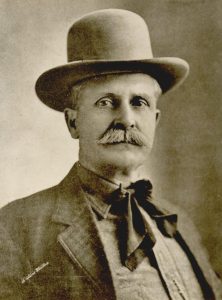 Unfortunately, there are among us, people who are corrupt and ruthless, and sometimes, things happen because of corruption, anger, or even stupidity. William Tilghman was born in Fort Dodge, Iowa on July 4, 1854, at the height of the “Wild West” era. He was a man who wanted something more, so at 16 years old, he moved west. As sometimes happened, men who went west, toyed with the wild life that was brought about by the lawless area. Tilghman was no different. He fell in with a bad crowd of young men who stole horses from the Indians. After several narrow escapes with angry Indians, Tilghman decided that rustling was too dangerous and settled in Dodge City, Kansas, where he briefly served as a deputy marshal before opening a saloon. He was arrested twice for alleged train robbery and rustling, but the charges did not stick. It was a shaky start, but Tilghman gradually built a reputation as an honest and respectable young man in Dodge City. Before long, he became the deputy sheriff of Ford County, Kansas. Later, he was offered and accepted the job of the marshal of Dodge City…a real life Matt Dillon, from Gunsmoke.
Unfortunately, there are among us, people who are corrupt and ruthless, and sometimes, things happen because of corruption, anger, or even stupidity. William Tilghman was born in Fort Dodge, Iowa on July 4, 1854, at the height of the “Wild West” era. He was a man who wanted something more, so at 16 years old, he moved west. As sometimes happened, men who went west, toyed with the wild life that was brought about by the lawless area. Tilghman was no different. He fell in with a bad crowd of young men who stole horses from the Indians. After several narrow escapes with angry Indians, Tilghman decided that rustling was too dangerous and settled in Dodge City, Kansas, where he briefly served as a deputy marshal before opening a saloon. He was arrested twice for alleged train robbery and rustling, but the charges did not stick. It was a shaky start, but Tilghman gradually built a reputation as an honest and respectable young man in Dodge City. Before long, he became the deputy sheriff of Ford County, Kansas. Later, he was offered and accepted the job of the marshal of Dodge City…a real life Matt Dillon, from Gunsmoke.
Tilghman was one of the first men into the territory when Oklahoma opened to settlement in 1889, and he became a deputy US marshal for the region in 1891. In the late 19th century, lawlessness was still very much a part of Oklahoma. Tilghman helped to bring order the to area by ridding Oklahoma by capturing some of the most notorious bandits of the day. While locking up many criminals, Tilghman, nevertheless, managed to earn a well-deserved reputation for treating even the worst criminals fairly and protecting the rights of the unjustly accused. Any man, who found himself in Tilghman’s custody, knew he was safe from angry vigilante mobs, 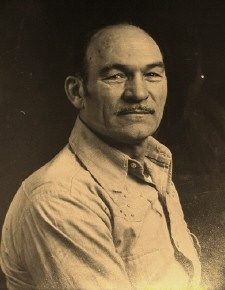 because Tilghman had little tolerance for those who took the law into their own hands. In 1898, a wild mob lynched two young Indians who were falsely accused of raping and murdering a white woman. Tilghman arrested and secured prison terms for eight of the mob leaders and captured the real rapist-murderer.
because Tilghman had little tolerance for those who took the law into their own hands. In 1898, a wild mob lynched two young Indians who were falsely accused of raping and murdering a white woman. Tilghman arrested and secured prison terms for eight of the mob leaders and captured the real rapist-murderer.
In 1924, after serving a term as an Oklahoma state legislator, making a movie about his frontier days, and serving as the police chief of Oklahoma City, Tilghman might well have been expected to quietly retire. However, it was the height of the Prohibition era, and the old lawman was unable to hang up his gun. He still felt a calling to keep law and order in his town. He accepted a job as city marshal in Cromwell, Oklahoma. On November 1, 1924, William Tilghman, who was known to both friends and enemies alike as “Uncle Billy” was murdered by a corrupt prohibition agent who resented Tilghman’s refusal to ignore local bootlegging operations. The Prohibition officer was drunk, and in his anger, made the worst mistake of his life.

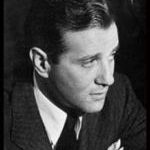 Seldom, if ever, do you see a minor political party that is able to obtain national support for their way of doing things, but that did happen in the 1920s. The Prohibition Party (PRO) is a political party in the United States best known for its historic opposition to the sale or consumption of alcoholic beverages. It is the oldest existing third party in the US. The party was an integral part of the temperance movement. I suppose it depends on which side you were on, as to how you feel about alcohol, but the reality is that they most likely didn’t have the support of the majority of the American citizens.
Seldom, if ever, do you see a minor political party that is able to obtain national support for their way of doing things, but that did happen in the 1920s. The Prohibition Party (PRO) is a political party in the United States best known for its historic opposition to the sale or consumption of alcoholic beverages. It is the oldest existing third party in the US. The party was an integral part of the temperance movement. I suppose it depends on which side you were on, as to how you feel about alcohol, but the reality is that they most likely didn’t have the support of the majority of the American citizens.
Nevertheless, on Saturday, January 7, 1920, the Manchester Guardian reported with a level of mild shock on one of the most extraordinary experiments in modern democratic history. “One minute after midnight tonight,” the story began, “America will become an entirely arid desert as far as alcoholics are concerned, any drinkable containing more than half of 1 per cent alcohol being forbidden.” In fact, the Volstead Act, which prohibited the sale of “intoxicating liquors,” had come into operation at midnight the day before. But the authorities had granted drinkers one last day, one last session at the bar, before the iron shutters of Prohibition came down.
I don’t really know how I feel about the comparison between the prohibition of alcohol, and the war on drugs (specifically Marijuana), but one thing can be said for sure. With the law that made these things illegal, came, by natural progression, the gangs or gangsters, who illegally made a way for those things to be obtained by the people. As to Prohibition, the 20s were filled with bootleggers, gangsters, and illegal purchases of alcohol…hence the Roaring Twenties.
Across the United States, many bars and restaurants marked the demise of the demon drink by handing out free glasses of wine, brandy and whisky. Others saw one last opportunity to make a killing, charging an eye-watering “20 to 30 dollars for a bottle of champagne, or a dollar to two dollars for a drink of whisky”. In some establishments, mournful dirges played while coffins were carried through the crowds of drinkers. In others, the walls were hung with black crepe. And in the most prestigious establishments, the Guardian noted, placards carried the ominous words: “Exit booze. Doors close on Saturday.” It was like an Irish wake for the deceased.
The prohibition of alcohol lasted for almost 14 years, and with it came a violent era in out country’s history. Gangsters like Al Capone, Bugsy Segal, Lucky Luciano, Meyer Lansky, Johnny Torrio, Arnold Rothstein, Bugs Moran, Enoch “Nucky” Johnson, and the mafia sprung into action…refusing to be railroaded. Prohibition’s largely Protestant champions, a large proportion of whom were high-minded, middle-class women. were the do-gooders of the day. Often deeply religious, they saw Prohibition as a kind of social reform, a crusade to clean up the American city and restore the founding virtues of the godly republic. The gangsters, gangs, and the mafia saw it as a declaration of war, and acted accordingly. Stills were built, and bootleggers financed. 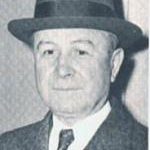
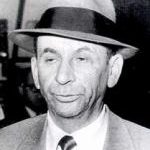 Before long violence broke out as the runners were caught and the gangsters lost their product. Nevertheless, for 14 long years, Prohibition persisted, until there was finally enough pull in Congress. The 21st Amendment to the United States Constitution is ratified on December 5, 1933, repealing the 18th Amendment and bringing an end to the era of national prohibition of alcohol in America. At 5:32pm EST, Utah became the 36th state to ratify the amendment, achieving the requisite three-fourths majority of states’ approval. Pennsylvania and Ohio had ratified it earlier in the day.
Before long violence broke out as the runners were caught and the gangsters lost their product. Nevertheless, for 14 long years, Prohibition persisted, until there was finally enough pull in Congress. The 21st Amendment to the United States Constitution is ratified on December 5, 1933, repealing the 18th Amendment and bringing an end to the era of national prohibition of alcohol in America. At 5:32pm EST, Utah became the 36th state to ratify the amendment, achieving the requisite three-fourths majority of states’ approval. Pennsylvania and Ohio had ratified it earlier in the day.

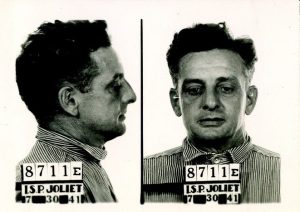 Many things that used to be illegal, are legal today…things like inter-racial marriage, marijuana (now legal in some states), and booze…believe it or not. Booze went from being legal, to being illegal in 1920, and back to legal in 1933. During those years while it was illegal, as with any law, there were those who broke the law and did it anyway. With booze, the problem, like with marijuana…because it was illegal, was no legal source for it. Enter the Bootlegger. Bootleggers, made their own booze and sold it on the black market of the day. The booze, often called Moonshine, was probably stronger than what booze would have been if it had been regulated and made legally, but an illegal product, is made to different standards, and often contains a much higher concentration than if it were legal.
Many things that used to be illegal, are legal today…things like inter-racial marriage, marijuana (now legal in some states), and booze…believe it or not. Booze went from being legal, to being illegal in 1920, and back to legal in 1933. During those years while it was illegal, as with any law, there were those who broke the law and did it anyway. With booze, the problem, like with marijuana…because it was illegal, was no legal source for it. Enter the Bootlegger. Bootleggers, made their own booze and sold it on the black market of the day. The booze, often called Moonshine, was probably stronger than what booze would have been if it had been regulated and made legally, but an illegal product, is made to different standards, and often contains a much higher concentration than if it were legal.
There have been a number of shows and movies that have almost romanticized bootlegging, but in reality, it was a highly dangerous occupation…if it could be called that. I’m sure there were a few non-violent 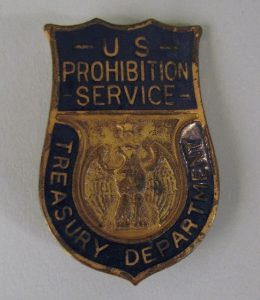 bootleggers…until they had to become violent to protect their stash and their territory. Men like Roger “The Terrible” Touhy, Al Capone, and Roy Olmstead (nicknamed the “King of the Puget Sound Bootleggers”), did everything in their power to bring liquor to those who wanted it…for a price, of course. They had to make a profit and hazard pay was essential too. Early bootleggers smuggled European liquor in, but that quickly became very dangerous, so the bootleggers started to make their own. Every time the prohibition officers caught a bootlegger, the liquor was disposed of…often into the sewer drains. Prohibition officers went everywhere. They were in the cities and the country…anywhere that their intel indicated that a bootlegger had a still in the area. The Temperance Society insisted that they remove every drop of the “demon liquor” from this country. They were convinced that liquor was the root of all evil…so to speak.
bootleggers…until they had to become violent to protect their stash and their territory. Men like Roger “The Terrible” Touhy, Al Capone, and Roy Olmstead (nicknamed the “King of the Puget Sound Bootleggers”), did everything in their power to bring liquor to those who wanted it…for a price, of course. They had to make a profit and hazard pay was essential too. Early bootleggers smuggled European liquor in, but that quickly became very dangerous, so the bootleggers started to make their own. Every time the prohibition officers caught a bootlegger, the liquor was disposed of…often into the sewer drains. Prohibition officers went everywhere. They were in the cities and the country…anywhere that their intel indicated that a bootlegger had a still in the area. The Temperance Society insisted that they remove every drop of the “demon liquor” from this country. They were convinced that liquor was the root of all evil…so to speak.
The bootleggers quickly became Mob leaders with their own gangs, and crossing them quickly became very dangerous. They would even frame or kill their competition, in fact it happened often. Al Capone framed Roger Touhy for kidnapping by his bootlegging rivals with the help of corrupt Chicago officials, was serving a 99-year sentence for a kidnapping he did not commit. He was recaptured a couple of months later. The two men hated each other bitterly, and when it was finally proven that Touhy had been framed, he was released. Three weeks 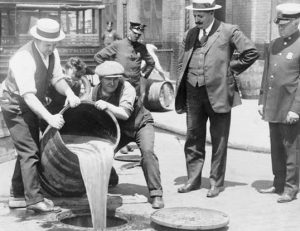
 later as he walked into his sister’s house, Touhy was gunned down. Right before he died, he said, “I’ve been expecting it. The b*******s never forget.” No arrests were made. I wonder if anyone really tried. Those were dangerous times, and one gang often retaliated against another. Even after Prohibition was repealed in 1933, bootleggers did not become extinct, because there were still counties and cities who continued Prohibition. Where there is a law, there are lawbreakers.
later as he walked into his sister’s house, Touhy was gunned down. Right before he died, he said, “I’ve been expecting it. The b*******s never forget.” No arrests were made. I wonder if anyone really tried. Those were dangerous times, and one gang often retaliated against another. Even after Prohibition was repealed in 1933, bootleggers did not become extinct, because there were still counties and cities who continued Prohibition. Where there is a law, there are lawbreakers.

